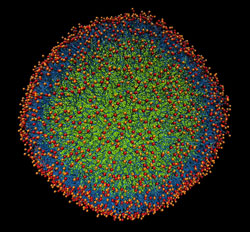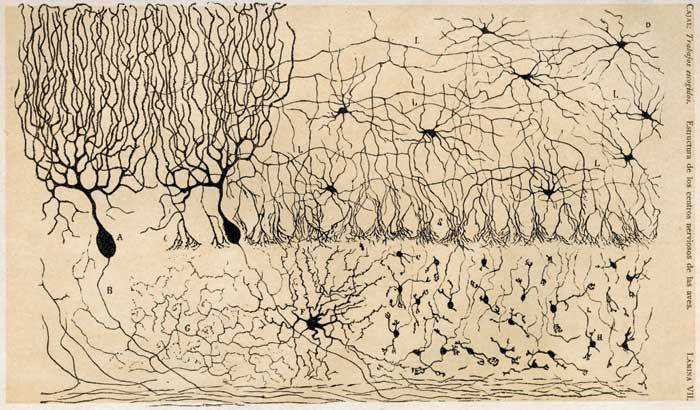Although the word “nanotechnology” evokes fascination, the
field itself is often not fully understood. For instance, one of the
misconceptions mentioned by Dr. Gimzewski resonated with me, in that I also held
the notion that nanotechnology has to do with robots in laboratories. In
reality, nanotechnology is prevalent in the tasks and objects of our daily
lives, such as in sunscreen and cosmetics (Gimzewski). I was surprised to learn
that some nanotechnology has roots in ancient times, and that nanotechnology can
even be found in nature. The pervasiveness and versatility of nanotechnology
illustrates its inherent power and potential to vastly improve our lives.
 |
| Nanostructures give this butterfly's wings their blue color |
 |
| Computer simulation of a nanobee particle |
It is interesting to consider how as our society advances,
things become smaller. Although this may seem counterintuitive, the ability to
contain the same, or increased, functionality in a reduced amount of material
or space essentially expands our capacity and efficiency. Ray Kurzweil
describes how our technological capacities have progressed exponentially
through time, predicting we will eventually reach the “Singularity” as this
technology becomes increasingly integrated into our lives (Kurzweil). Combining
this increase in technological capacity with artistic creativity can result in previously
unimaginable solutions to enhance human life. One of the most intriguing
examples of this pairing is the nanobee, a self-assembling nanoparticle that
can selectively target cancer cells (“Making Stuff: Smaller”). This exciting
idea combines evolutionary advancements refined by nature with nanotechnology
applications and innovative design elements to revolutionize the way we treat
disease.
 |
| Nano "lock box" created using DNA folding |
References
Ericson, Gwen. “Tumors feel the deadly sting of nanobees.” The Source, Washington University in St. Louis, https://source.wustl.edu/2009/08/tumors-feel-the-deadly-sting-of-nanobees/. Accessed 27 May 2018.
Gimzewski, Jim. “Nanotech for Artists.” YouTube, uploaded by uconlineprogram, 21 May 2012, https://www.youtube.com/watch?v=q7jM6-iqzzE.
Gimzewski, Jim and Vesna, Victoria. “The Nanomeme Syndrome: Blurring of fact & fiction in the construction of a new science.” Technoietic Arts, vol. 1, no. 1, 2003, pp. 7-24.
Kurzweil, Ray. “A university for the upcoming singularity.” TED, Feb 2009, https://www.ted.com/talks/ray_kurzweil_announces_singularity_university.
“Making Stuff: Smaller.” NOVA. PBS, 26 Jan 2011. http://www.pbs.org/wgbh/nova/tech/making-stuff.html#making-stuff-smaller. Accessed 27 May 2018.
Mu, Zhongde, et al. “In situ synthesis of gold nanoparticles (AuNPs) in butterfly wings for surface enhanced Raman spectroscopy (SERS).” J. Mater. Chem. B, vol. 1, 2013, pp. 1607-1613.
Rothemund, Paul. “DNA folding, in detail.” TED, Feb 2008, https://www.ted.com/talks/paul_rothemund_details_dna_folding.
Slonczewski, Joan. “Nanorobot Detects Cancer.” Ultraphyte.com, https://ultraphyte.com/2012/02/26/nanorobot-detects-cancer/. Accessed 27 May 2018.





